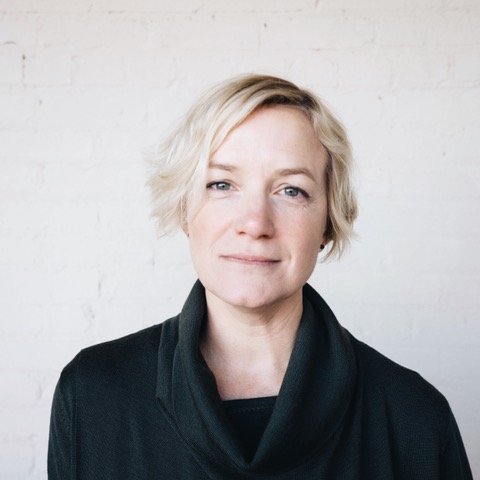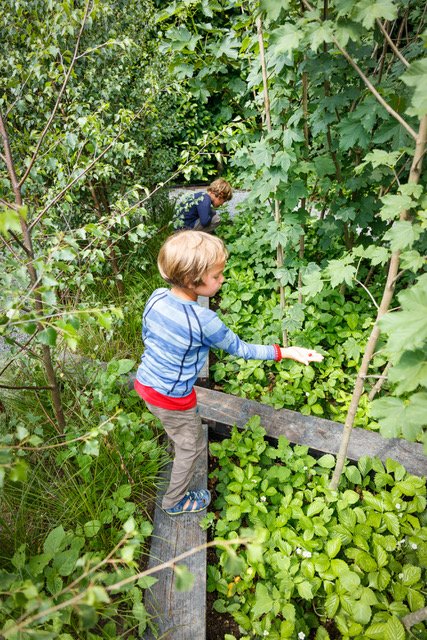PHOEBE LICKWAR
Principal of FORGE Landscape Architecture, Associate Professor of Landscape Architecture at University of Texas - Austin, and 2022 American Academy of Rome recipient.
Phoebe Lickwar is the founding Principal of FORGE Landscape Architecture and an Associate Professor of Landscape Architecture at University of Texas - Austin. She is co-author of the book Farmscape: The Design of Productive Landscapes and recipient of the 2022 Garden Club of America Rome Prize at the American Academy in Rome. Lickwar's research and design practice is focused on carbon farming, the integration of regenerative agriculture-based systems in contemporary urban landscapes, cultural practices of traditional agroecology, agroforestry systems, urban agriculture, and critical plant studies.
We were thrilled to talk with Phoebe about the discipline of Landscape Architecture within the rural landscape. Phoebe’s work often bridges the divide between the rural and urban, and it stands at the forefront of many rural design conversations. Her work and design practice have renewed the links between landscape architecture and agriculture, developing a space for practitioners to contribute to productive conversations and designs centered on land-use and agroecological practices. We were curious to hear about her current work in the Mississippi Delta, and how her recent time spent in Central Italy on the Rome Prize has shaped her perspective on America’s rural landscape.
Phoebe Lickwar
Your work isn’t explicitly rural, however it is oriented around commonly rural themes: agriculture, soil health, and histories of land use and management. How do you see designers playing a role in the sharing of knowledge and practices across the rural-urban continuum? And across disciplines?
Many of our contemporary design conversations related to the rural landscape are entrenched in the same extractive mindset that has defined the urban perspective on the countryside for millenia. To characterize the rural landscape as territory serving the city, to engage it solely as a “problem” of food or timber production for a largely urban population, is to reinforce systems of extraction and oppression that have done great harm to land and people. I am not interested in engaging rural lands as so many problems to be solved, because the way these problems are framed generally reinforces existing power structures and existing wealth distribution. Designers need to be very careful of consciously or unconsciously supporting systems and practices that have degraded rural lands and oppressed rural communities.
At the outset, designers need to approach their work with, at the very least, a basic understanding of how rural places have been impacted across centuries by a political agenda that seeks to concentrate wealth at any cost. Secondly, it’s important to understand that there is a vast reservoir of knowledge that has been retained by people occupying rural lands and by people dispossessed of their land who have migrated to cities. This knowledge is as complex and varied as the cultures from which it stems. While power has always sought to erase this knowledge, because it is in direct conflict with the goal of privileging profit for a few, it has failed to eradicate it. I am very interested in the project of documenting and disseminating this cultural knowledge and the possibility of engaging it through design.
In landscape architecture, we would do well to start from a place of acknowledgement, of the ways our discipline has been in service to power, reinforcing the erasure of cultivation and land stewardship practices of marginalized people. Designers have much to contribute, but our contributions are more meaningful in collaboration with those who work intimately with the land every day. Honestly, I am quite tired of the bravado of landscape architecture and its supposed capacity to change the world. I am much more interested in a conversation about what we need to learn, about what our blinds spots are, because that conversation is the one that will move the discipline forward. Experts across land stewardship practices such as farmers and foresters, and especially indigenous communities, have much to teach us.
I think it is interesting that many landscape architects working in the urban realm have ties to farming through their family histories and it strikes me that this is often used to legitimize the designer’s authority, as if an association or first-hand knowledge of farming, no matter what kind of farming we are talking about, translates to an intimate knowledge of soils, plants, agricultural systems, and the rural landscape. I don’t lay claim to expertise in farming by virtue of my family history, quite the opposite, even though I come from a long line of Iowa farmers. My mother fled the farm at a young age. My father was born and raised in the city. In many ways, I’ve been trying to negotiate the rural-urban continuum my whole life, to recover an intimacy with cultivation that I never had growing up. Like many in my generation whose parents left farming for the city, I have been disconnected from my rural heritage, and that has catalyzed a deep curiosity about rural culture. I’m interested in rural culture for its own sake, but I’m also interested in what rural practices can teach us about living in the city.
Lickwar published Farmscape: The Design of Productive Landscapes with Roxi Thoren in 2020
You recently returned from a year of studying agroecology in central Italy as a recipient of the Rome Prize. What did you observe there? Are there similar dynamics at play in the United States?
My year in Italy as a Rome Prize fellow was an extraordinary discovery of (agri)cultural resistance. My intention was to study a form of agroforestry that scholars had reported lost, but which I suspected might still exist in fragments across central Italy. This system of cultivation, known as coltura promiscua or mixed cultures, is a highly integrated system of trees, grape vines, and arable crops. It was a defining feature of the Italian rural landscape until the 1960’s, when it was replaced by monocultural farming systems. Fortunately, my hunch was right, it was not entirely gone. My work documented remnants that I found by scouring aerial imagery, by reading historic accounts, and by blind luck driving through the countryside. I photographed the sites I located and interviewed the farmers and winemakers who had preserved them. It was amazing to learn how the practice varied regionally and how it has continued to be valued for its biological diversity and climate resilience, despite the amount of labor required.
Alberata Aversana (2022)
Can you talk about FORGE and some of your recent projects? How has your research informed your practice?
At FORGE, we work across the rural-urban continuum at vastly different scales, but in each project we interrogate what it means to design regeneratively. The work is guided by my research in agroecology. Sometimes this means privileging restraint and doing very little in order to preserve what is of great value and sometimes this means intervening with a fairly heavy hand to facilitate repair of degraded land. For instance, in a current project in Bentonville, Arkansas we are designing a residential community in an existing woodland with sensitive slopes down to an extraordinary creek ecosystem. Every design decision related to creating a sense of community has been in service to the goal of conserving the woodland and improving water quality. Our attention is directed towards minimal impact and the repair of the woodland understory which is largely absent due to past management practices. This project includes an agroforestry garden where we are layering fruiting forest species like Pawpaw with medicinal plants like American Ginseng and Black Cohosh.
On another project, we are leading a large-scale effort to return marginal agricultural land in the Lower Mississippi Alluvial Valley to bottomland hardwood forest. Ninety-eight percent of bottomland hardwood forest has been lost in the LMAV, most of it removed for soybean and cotton farming. The goal of this project is to reforest 50,000 acres over ten years. Our first one-thousand-acre parcel of land in Louisiana was cleared in the 1960’s, when a rise in soybean commodity prices resulted in the clearing of millions of acres virtually overnight. They did not even salvage the lumber and people have said you could see the smoke from the burning of trees for miles. The land floods seasonally and in wet years the farmer can lose the entire crop. On my last site visit, I witnessed this; the entire acreage in soybeans was under water, the crop destroyed. But it’s not only seasonal flooding that is impacting farming in this area. On the drier fields of the site and beyond, for as far as you can see, are rows of cotton, requiring heavy inputs of fertilizer and glyphosate, with deleterious effects on living soils. Climate change means shifting rainfall patterns and this year an unseasonably wet month during the growing season resulted in plants flowering too late for a good harvest. This land simply does not support conventional farming and the practices have had devastating consequences. What’s more, it is a critical piece of fragmented wetland habitat within the Catahoula-Dewey Wills-Three Rivers IBA, which is notable as a key biodiversity area with particular significance for waterfowl.
Our work has required close consultation with local foresters and through that process we’ve learned a lot about conventional approaches to reforestation. We’re exploring ways to improve upon those approaches and to change the way that reforestation happens. Part of our work includes measuring and monitoring changes in soil carbon, to better understand how our efforts are contributing towards creating a carbon sink. I’ve had to learn a lot about the carbon credits market and reforestation efforts in the LMAV and it is truly the wild west, with a shameful amount of greenwashing and predatory capitalism. We’re holding ourselves accountable, with a measured approach that attends to the goal of sinking carbon while also maximizing biodiversity and habitat value.
Loren Roots Initiative - Catahoula Parish, LA
Lastly, What does your ideal future for the rural countryside look like?
My ideal future for the rural countryside would involve a dismantling of extractive monoculture and the implementation of farming and forestry practices that rebuild communities that have been devasted environmentally, economically, and culturally. I don’t think this can be achieved without reparations. We need to stop thinking of the rural countryside in terms of what we can extract from it, in terms of its productivity, and support ongoing efforts of indigenous communities and smallholder farmers to steward land and grow healthy communities. I think there are very real limits to urbanization and as we move closer to those limits, we will see more people moving back to rural places. It’s exciting to imagine how we might contribute as designers to a conversation around a rural renaissance that is equitable and reparative.
Into the Woods! by FORGE
Images provided by Phoebe Lickwar




